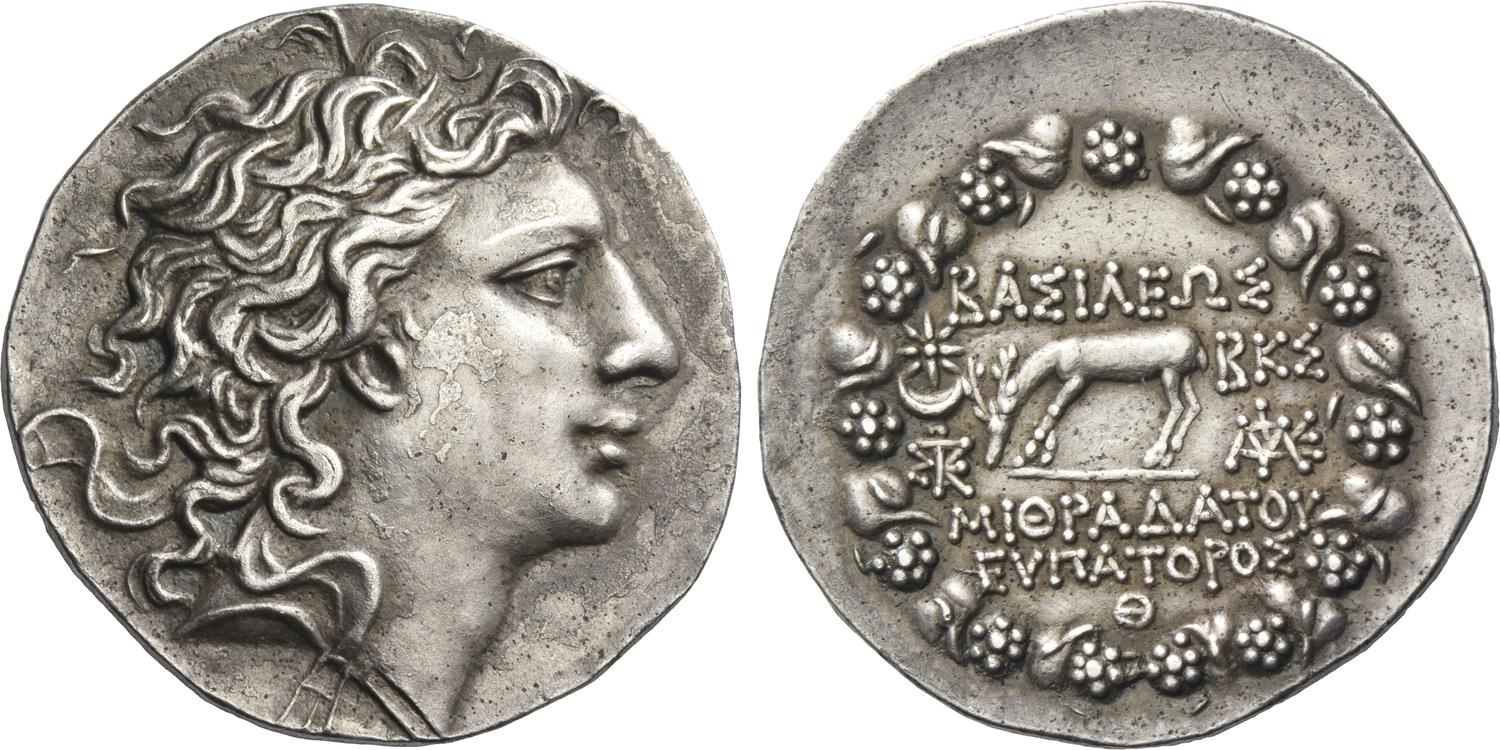Coins from the Kingdom of Pontus, an ancient state located in the northeastern part of Anatolia (modern-day Turkey), are historically significant and sought after by collectors of ancient coins. Pontus was ruled by a series of kings, some of whom issued coins during their reigns. Here’s an overview of Pontic coins and their historical context:
Key Facts
- Period: Approximately 281 BC to 63 BC
- Location: Pontus, in northeastern Anatolia (modern-day Turkey)
- Material: Typically silver and bronze
- Design: Reflects Hellenistic and local Anatolian influences
Historical Context
Pontus emerged as a regional power after the collapse of Alexander the Great’s empire. Its rulers, often referred to as Pontic kings, issued coins primarily to assert their authority, facilitate trade, and pay their troops. Pontic coins were minted in various cities within the kingdom, such as Amasia and Sinope.
Design Features
- Obverse (Front):
- Usually depicts the portrait of the reigning king, sometimes wearing a diadem or crown.
- Inscriptions may include the king’s name or titles.
- Reverse (Back):
- Often features symbols or mythological figures related to Pontic or Greek culture.
- Inscriptions may indicate the minting authority or city.
Notable Pontic Kings and Their Coins
- Mithridates VI Eupator (120-63 BC):
- One of the most famous Pontic kings, known for his conflicts with Rome.
- His coins often depict his portrait with Greek inscriptions.
- Mithridates VI issued various denominations, including silver tetradrachms and bronze coins.
- Mithridates V Euergetes (150-120 BC):
- Predecessor of Mithridates VI, known for expanding Pontic territories.
- His coins also feature his portrait and Greek inscriptions, often emphasizing his royal status.
- Pharnaces II (63-47 BC):
- Son of Mithridates VI, who briefly ruled Pontus after his father’s defeat by Rome.
- Pharnaces II issued coins during his reign, reflecting his claim to the Pontic throne.
Collecting and Value
- Rarity: Genuine Pontic coins are relatively rare due to their ancient origin and limited survival.
- Value: Prices vary widely based on the coin’s condition, rarity, and historical significance. High-quality silver tetradrachms and coins from prominent rulers can command substantial prices in the market.
- Authenticity: Due to their value, Pontic coins are sometimes counterfeited. It’s important to purchase from reputable dealers and seek certification from recognized numismatic organizations.
Pontic coins provide a valuable glimpse into the history and culture of the ancient Kingdom of Pontus. They are prized by collectors for their historical significance, artistic merit, and the insights they offer into the political and economic landscape of Hellenistic Anatolia. Owning a Pontic coin connects collectors directly with the legacy of these ancient rulers and their contributions to the broader Mediterranean world during antiquity.
